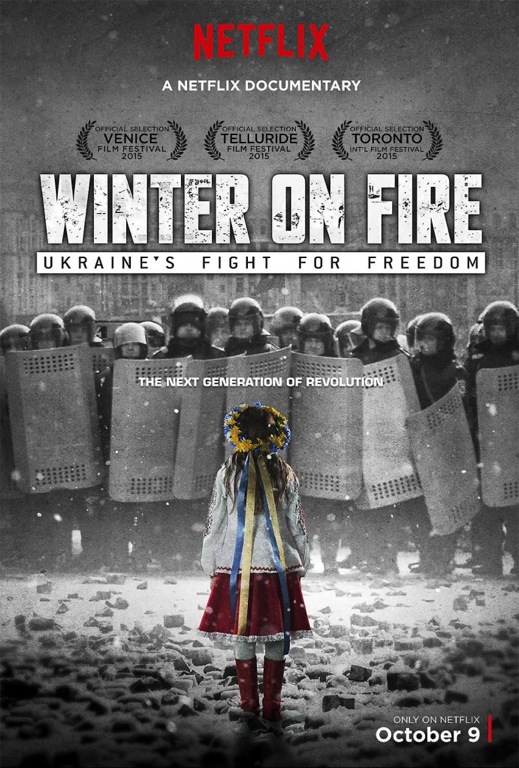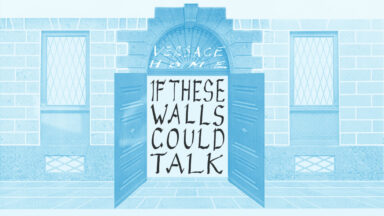
Text by: Antonio Armano
One year after the release of Winter on Fire, here comes Ucraine on Fire: similar titles for markedly different documentaries. Co-produced by Oliver Stone and presented last summer at the Taormina Film Festival, Ucraine on Fire provides an astonishing version of the events that took place in Maydan Square, led to the ouster of Ukrainian President Viktor Yanukovich, and ultimately to war.
Stone’s intent – to counter the touching narration of Winter of Fire – is clear. But while Stone beat Stanley Kubrick to the punch with Platoon, forcing Kubrick to postpone the release of Full Metal Jacket: in order to avoid overwhelming audiences with competing Vietnam films, with Ukraine on fire Stone arrives late.
Although Stone’s film is directed by Igor Lopatonov, the controversial New York filmmaker put his face, as well as his money on the line, promoting the documentary and appearing in the film to interview both Yanukovich and Putin.
Winter of Fire, directed by Evgeny Afineevsky, focuses mainly on the stories and faces of the “accidental heroes” of Maydan: ordinary, everyday people who were the first victims of police attacks, like activist Serhiy Nigoyan, of Armenian descent, who fled to Ukraine to escape another war and was ultimately shot in Kiev. Or a young gypsy boy who seems to arrive on the square straight from the street, finding himself unexpectedly bound in brotherhood with the protesters.
Ucraine on Fire narrates the events from another point of view, that of pro-Russian Ukrainians and Russians. It shows images of a Crimea split from Ukraine and the Donbass conflict, sharing the opinions of leaders and important commentators with the audience.
In Winter of Fire we see special corps – the Berkuts, or “Golden Eagles” – beating the crowds with clubs and firing first rubber, then all-too-deadly metal bullets. In Ukraine on fire, however, we see images of wounded Berkuts and acts of aggression against them. It’s an attempt to tell a different story, to overturn the version conveyed by mass media, mostly against the power system of the former President of Ukraine, in order to defend the crowd that resisted during that frigid, memorable winter (2013-2014).
The differences don’t stop there. I watched both documentaries in a sort of marathon session in order to understand the different versions they convey of the same tragic events. I wanted to understand this “war of documentaries,” even before I could comprehend these “documentaries on war.”

Winter on Fire, nominated for Oscar, is available on Netflix (https://www.netflix.com/it/title/80031666); the documentary co-produced by Stone and the Californian production company Another Way (http://anotherwayproductions.com) has not yet been distributed.
Ukraine on Fire is a journalistic product: less narrative and emotional. It tries to explain Ukraine’s complex, far-reaching history, underscoring how this grand expanse of land located between Western Europe and Russian Eurasia has always been fought over by various empires, torn between opposing cultures and political imperialisms. It is the ancestral home of the Slavs, the land of Gogol and Bulgakov: a big, beautiful country largely unknown beyond its borders and divided between East and West.
But this reconstruction lacks something, and that lack penalizes our understanding. We see no mention of Golodomor, the genocidal famine Stalin imposed on the country in the 1930s, killing millions of Ukrainians. There’s no mention of Stalin’s collectivization of lands, nor his persecution of religion. These oversights make it hard to understand why the Nazis were welcomed as liberators. They weren’t welcomed because the Ukrainians were Nazis too, but because the population was desperate for salvation. The Germans reopened churches and returned land to peasants, which meant a great deal to the Ukrainians. In The Volga Rises in Europe, Malaparte explains how religious authorities were exiled to Siberia, but the Nazis brought freedom from Stalin and agents of the NKVD.
Winter on Fire, on the contrary, does not mention the presence of extreme rightwing elements among Maydan protesters. These protesters included people of all kinds, from housemaids to radical extremists, as Andrey Kurkov, a Russian-born writer living in Kiev, pointed out in Ukraine Diaries (published in Italy by Keller).
While Ukraine on Fire stands out as a mouthpiece for “bad guys” Putin and his Ukrainian comrade Yanukovich, it must be pointed out that from a certain point onward the film places too much emphasis on conspiracy theories. Naturally it’s important to hear both sides, albeit through interviews that lack any probing questions. But the story it tells is little more than conspiracy theory, claiming that every single event was manipulated by the CIA.
When it comes to the Maydan massacre and the roughly one hundred civilians who died there – the true point of no return in this conflict – Yanukovich denies any responsibility. He depicts the Berkuts special forces as elements not only out of his control, but directly controlled by the CIA. Even the poisoning of pro-Western leader Viktor Yushchenko, during the first Maydan in 2004, is depicted as an American job. CIA agents, or their Ukrainian collaborators, were evidently so effective or lucky that they managed to poison Yushchenko just enough to leave him alive and capable of playing the victim in order to win the presidential election: a hero of the pro-Western front. To hear this version Yushchenko, despite having been filled with dioxin and disfigured by the CIA, happily remains a US ally.
Winter of Fire is hagiographic, partial and a bit naïve. But it doesn’t venture into conspiracy theory. It doesn’t even accuse Putin, who probably, like Obama, had a hand in the Ukrainian crisis. Watching both documentaries in sequence, absorbing opposing versions of the same story, felt somehow schizophrenic. It made me long for something different, a more objective account of those tragic events.
I was reminded of most oft-quoted sentence during civil war in the former Yugoslavia, an expression that dates back to Ancient Greece: “The first victim of war is truth.”
During that civil war (not in Ancient Greece) Boris Yeltsin didn’t provide the Serbians – historically Russia’s allies – with much support as they were besieging Sarajevo and committing genocidal massacre in Srebrenica. Today Putin, a far stronger character, is on duty at the Kremlin. His popularity is high and growing, even outside Russia in Western countries. The ultimate message of Ukraine on fire is that we must all beware of a Cold War 2.0, of a new nuclear confrontation between the US and Russia.
It’s impossible not to agree.
Today Italian audiences are awaiting the release of Stone’s latest movie Snowden, focusing on the former CIA technician who, after denouncing mass digital surveillance programs, fled to Russia. But this is another story. Better yet, it’s another chapter in a story we’ve already started.


